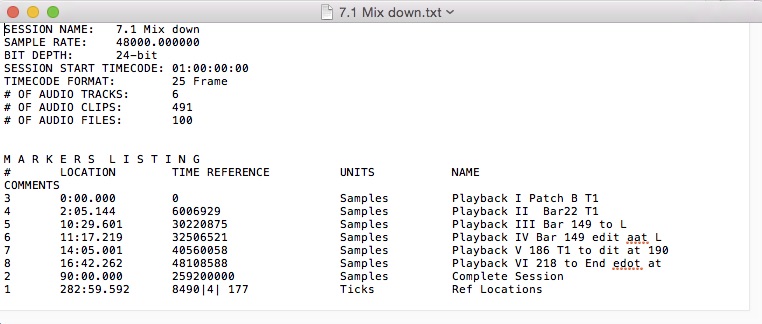
- #Twistedwave .wav file to text archive#
- #Twistedwave .wav file to text pro#
- #Twistedwave .wav file to text code#
WAV audio format which stores audio data in a straightforward linear fashion. In terms of digital audio files, first there was the.
#Twistedwave .wav file to text pro#
If you have ever used a nice, user friendly database app like FileMaker Pro you will know that you can keep adding fields to the database to your hearts content, but does the same apply to metadata? Well… yes and no… And here’s where we need to do some research into the actual format of metadata and how it is embedded into your soundfiles. Once you have spent the time entering metadata, it is so important that there is no way you ever want to risk losing it, so apart from regularly backing up your SoundMiner databases I also believe you should export your metadata into the source files themselves. But the danger here is what happens if that database file is lost or becomes corrupt? Now this is an example of metadata stored within the source file itself & it is not the only way the other option is to store metadata in a seperate database, and some apps give you the choice of both scenarios eg the sound library application SoundMiner allows you to tag additional descriptive terms to any file & by default these added terms are stored in SoundMiners own database file. You can see from this example that it easily gives you the ability to tag the file with more descriptive terms than is used in the file name, so eg as below if I searched for ‘chomp’ in filename alone I would get zero results, whereas searching filename & metadata would find the file…. Open it via Window menu > Browsers > Workspace and open one of your drives with sound files on it & see what metadata already exists in your files.

The first issue is what applications support metadata? With ProTools you can display and edit metadata in the workspace browser. But it is not as straight forward as perhaps it should be, since as with many technical developments we meet the clash of open source versus proprietry systems. For example the location sound recordist must be very, very sure his file naming & metadata are correct because his media is inherited by a lot of people & is accessed repeatedly for many months, long after he is off the payroll & has archived his work.įor sound effects editors and sound designers, one of the most important assets you own is your own personal sound library and it is this application of metadata I’m going to discuss, as it represents a means of including far more descriptive information than is possible with just the filename, and it can have a major impact on the accessibility & useability of your library. While most people probably don’t worry too much about ever setting it up, metadata is crucial in the process of film making. Not coincidentally I have recently read an interesting book by Gene Smith called Tagging: People Powered Metadata and the Social Web and it outlines three main motives for tagging:ģ. But if you’ve ever uploaded a video to youtube or vimeo, or uploaded photos on flickr you might also notice you are obliged to enter descriptive tags to specify the genre, style or topic. Every time you take a photo or record a sound, the device you use is generating metadata for you eg metadata fields such as creation date and the device name & model are embedded in every photo or sound. And thats where metadata can help!Ĭhances are you’re already generating metadata, either automatically or manually.
#Twistedwave .wav file to text archive#
But time passes, memories blurr and data soon becomes lost in the archive constantly growing in parallel to your life.

All that data is getting stored and, in the present tense, we know what that data is and its relative importance. More than likely like me you are constantly generating new material – be it photos, sounds, video, music, text or whatever. But first lets get the definition under control: Metadata is data about other data – that’s where its value lies, but the metadata is only of value if you have a use for it, and the same could be said of the data itself.
#Twistedwave .wav file to text code#
This code saves it to external storage but how do i modify it with context.getDir("soundfiles", Context.MODE_WORLD_WRITEABLE) as i have also read only way to save to internal.Data about data, that’s got to be pretty interesting right? Well, it turns out to be more interesting than you might think. However i want to save TTS audio as a wav/mp3 file to the internal flash memory of phone and not sd card. I have read previous posts on here that saves text to speech audio as a wav file to external storage i.e sd card.


 0 kommentar(er)
0 kommentar(er)
